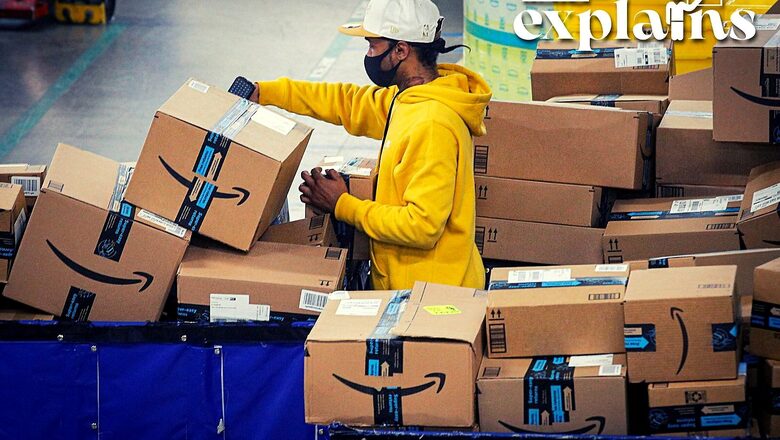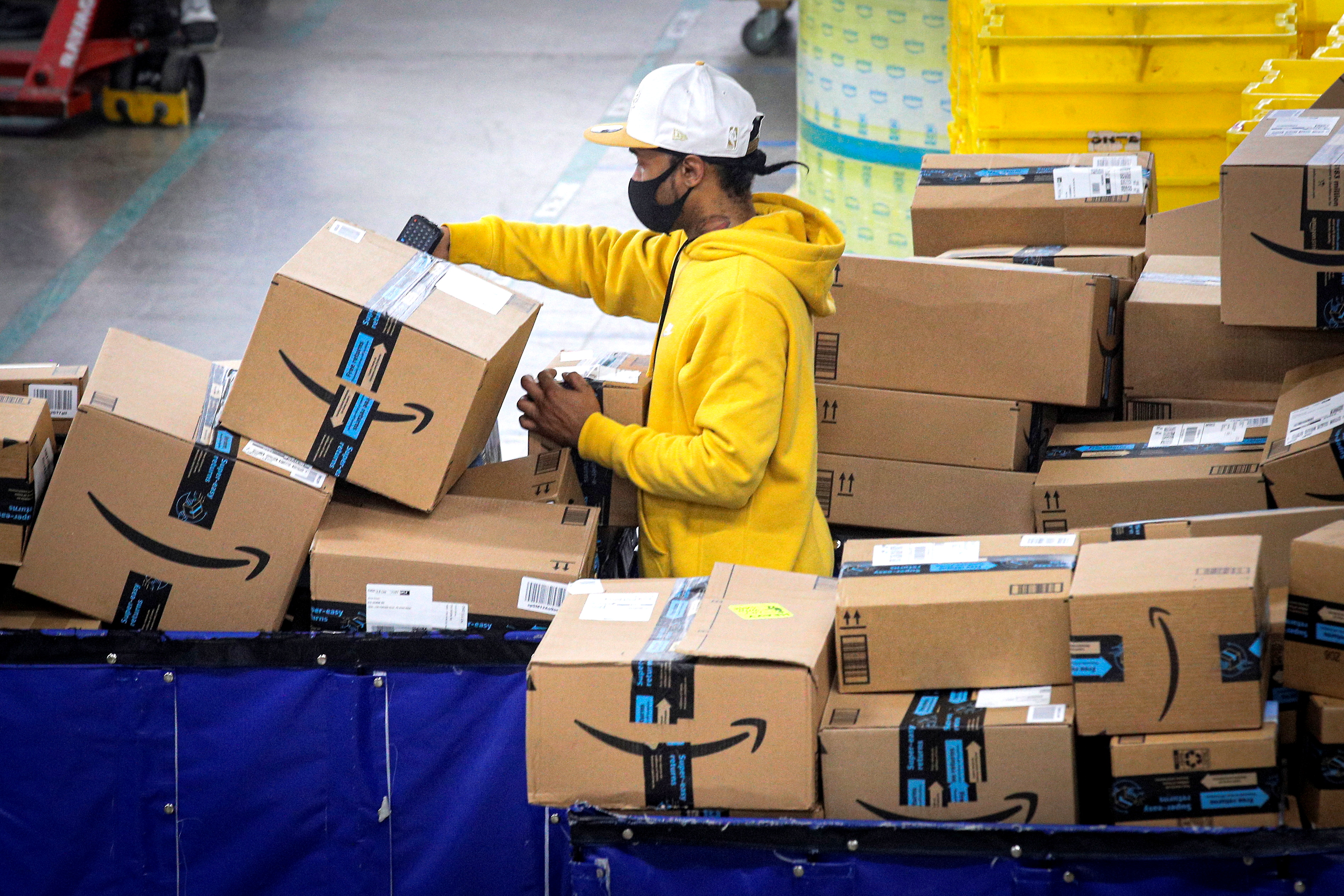
views
Amazon and Salesforce, makers of business software, are the latest US technology companies to announce significant job cuts as they trim payrolls that grew rapidly during the pandemic lockdown.
Amazon announced on Wednesday that it will lay off approximately 18,000 employees. The layoffs are the largest in the company’s history, though they represent only a small portion of its 1.5 million global workforce.
“Amazon has weathered uncertain and difficult economies in the past, and we will do so in the future,” CEO Andy Jassy said in a note to employees made public by the company. “With a stronger cost structure, we will be able to pursue our long-term opportunities.”
Which Departments of Amazon are Seeing Lay offs?
He stated that the layoffs will primarily affect the company’s physical stores, which include Amazon Fresh and Amazon Go, as well as its PXT organisations, which handle human resources and other functions.
Jassy informed employees in November that layoffs were on the way due to the economic climate and the company’s rapid hiring in recent years. Wednesday’s announcement included previously unnumbered job cuts. The company has also offered voluntary buyouts and has reduced costs in other areas of its vast operation.

What About Salesforce?
Meanwhile, Salesforce announced the layoff of approximately 8,000 employees, or 10% of its workforce.
The layoffs announced on Wednesday are by far the largest in the company’s 23-year history, founded by former Oracle executive Marc Benioff. Benioff pioneered the method of leasing software services to internet-connected devices — a concept now known as “cloud computing.”

The layoffs follow a reorganisation in Salesforce’s upper management. Bret Taylor, Benioff’s hand-picked co-CEO and Twitter’s chairman at the time of Twitter’s tortuous $44 billion sale to billionaire Elon Musk, left Salesforce. Stewart Butterfield, co-founder of Slack, then left. Salesforce paid nearly $28 billion for Slack two years ago.
According to the company, employees who lose their jobs will receive nearly five months of pay, health insurance, career resources, and other benefits. Amazon also stated that it is providing a separation payment, transitional health insurance benefits, and job placement assistance.
In a letter to employees, Benioff, now the sole CEO of Salesforce, said he blamed himself for the layoffs after continuing to hire aggressively throughout the pandemic, with millions of Americans working from home and demand for the company’s technology surging.
“As our revenue increased due to the pandemic, we hired too many people, which led to the economic downturn we’re now experiencing, and I accept responsibility for that,” Benioff said.
A Pandemic Boom, Then Fall
Salesforce employed approximately 49,000 people in January 2020, just prior to the pandemic. Salesforce’s workforce is still 50% larger today than it was prior to the pandemic.
When announcing in November that his company would lay off 11,000 employees, or 13% of its workforce, Meta Platforms CEO Mark Zuckerberg admitted that he misread the revenue gains that the owner of Facebook and Instagram was reaping during the pandemic.
Salesforce’s recent decline from the heady days of the pandemic, like that of other major tech companies, has taken a significant toll on its stock. Prior to Wednesday’s announcement, shares had dropped more than 50% from their peak near $310 in November 2021. The stock rose nearly 4% on Wednesday, closing at $139.59.
“This is a smart poker move by Benioff to preserve margins in an uncertain backdrop,” Wedbush analyst Dan Ives wrote.
Salesforce also announced on Wednesday that it will close some of its offices, but did not specify which ones. Since its completion in 2018, the company’s 61-story headquarters has been a prominent feature of the San Francisco skyline and a symbol of technology’s importance to the city.
What Do the Tech Layoffs Mean for Indian Workers?
A December 2022 report by India Today citing data from layoffs.fyi ( a crowdsourced database of tech layoffs) said over 2 lakh employees have been laid off by around 1,400 tech companies since the start of Covid-19. The data also revealed that while 2022 will have been the worst year for the tech sector, and early 2023 may be even worse for tech workers.
By mid-November, more than 73,000 workers in the US tech sector had been laid off by companies such as Meta, Twitter, Salesforce, Netflix, and others. Meanwhile, over 17,000 tech workers in India have been laid off, the report said.
Layoffs in technology began around the first half of the year and will continue throughout the year. According to reports, tech layoffs will worsen in the first half of 2023. Several major technology companies, including Meta, Amazon, Twitter, and Netflix, among others, have already laid off hundreds of thousands of workers through 2022.
A Precarious Situation for Tech Visa Workers
A report in the Guardian by Johana Bhuiyan on the plight of non-citizens who are facing layoffs in the tech sector in US, explained how immigrant tech workers on temporary visas have always had fewer options than green card holders or citizens because their visas, and thus their ability to work in the United States, are tied to their employers.
Even when done voluntarily, changing jobs can be a risk, literally in some cases, she wrote. Workers on H-1B visas, for example, must find a new employer willing to apply for and sponsor a new H-1B visa. When an application is submitted to the United States Citizenship and Immigration Services (USCIS), it is entered into a lottery to determine which applications will be considered. If their application is chosen in the lottery, USCIS will decide whether or not to grant them H-1B status.
This thorny and complex system frequently leaves people with H-1B visas feeling trapped in their current position, unwilling to risk losing their status by switching to another company. Those who are laid off must navigate the same system, but with the added pressure of finding another job within 60 days, the report said.
Being laid off can be a devastating setback for those on the path to obtaining a green card. Depending on how far they progressed in the often years-long application process, they may have to start over. Employers of H-1B workers can apply for a green card on their behalf through a three-step process that includes testing the labour market to demonstrate that no US workers are available to fill their positions. The green card system, like the H-1B process, is a lottery, but it is quota-based. The United States sets a quota for the number of green cards granted to citizens of each country. Because of the large number of immigrants from India and China, where many tech workers come from, there is a years-long backlog for green cards for those workers.
“Some people predict that if you were born in India and the job you’re applying for only requires a bachelor’s degree, for example, it may take a decade to get through that process,” Kristi Nevarez, a partner at law firm Fragomen, Del Rey, Bernsen & Loewy LLP told the Guardian.
With inputs from the Associated Press
Read all the Latest Explainers here



















Comments
0 comment